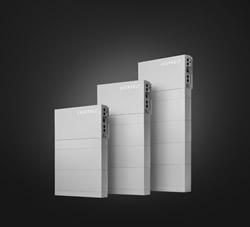Manufacturers to Overcome Potential Obstacles as Investments in Australia Increase
Numerous Taiwanese manufacturers have attended According to EnergyTrend, a research division of TrendForce, though industries are highly interested in the overseas PV market, plans are still on paper due to the policy and environmental factors.
Numerous Taiwanese manufacturers have attended Australia's solar investment seminar in order to understand the latest investment trends in the Australian PV market. According to EnergyTrend, a research division of TrendForce, though industries are highly interested in the overseas PV market, plans are still on paper due to the policy and environmental factors.
Australia is a place with good natural conditions for the development of solar energy, and Northern Australia is among other areas the most suitable for PV development. However, since southeast and southwest are the main electricity consumption areas, electricity transmission and distribution becomes a huge obstacle to the development of renewable energy in Australia. In addition, related policies have also hindered the investment of overseas industries. It is said that Australia's goal for renewable energy is 20GW/2020, which means that since they have already installed 11GW, until 2020, only 9GW is left for the market.
Taiwanese manufacturers are reluctant to invest in this business due to the continually reduced subsidy and prolonged payback period. Related industries indicated that already common among Taiwanese industries, the downstream market expansion is the main reason for the fierce competition in the Taiwanese market. The main problems in the overseas market, however, are still financial issues involving local law, financial planning, international finance, and risk management. Huge capitals are involved in the overseas business, and funds are often taken up by only a few projects. Moreover, since Taiwanese manufacturers seldom expand business to the overseas market, they may feel powerless when bidding on projects, and the overseas market expansion may thus be delayed.
Though price has continued to increase in the spot market, price increase in several products has slowed down.
In the Chinese market, polysilicon price is quoted at $135 RMB/kg-$150 RMB/kg; Multi c-Si wafer price is around $5.8 RMB/piece-$6.3/RMB; Mono c-Si wafer price is around $8.2 RMB/piece-$8.4 RMB/piece; the average cell price has also increased to approximately $2.7 RMB/watt. As for USD quotes, polysilicon price has continued to rise, with this week's average price at $17.915/kg, showing a 2.72% increase. Silicon wafer manufacturers have reached maximum utilization, and high efficiency product price has continued to rise; this week's average price was raised to $0.904 USD/piece, showing a 1.46% increase. Mono c-Si wafer price has also increased due to the high efficiency demands, with this week's average price up to $1.219 USD/piece, a 1.46% increase. Market demands for cells are still significant and may cause a continuous increase in cell price; this week's average price is up to $0.385 USD/Watt, a 1.32% increase. Raised by European manufacturers, this week's module price is up to $0.675 USD/Watt, a 0.15% increase.
Featured Product

